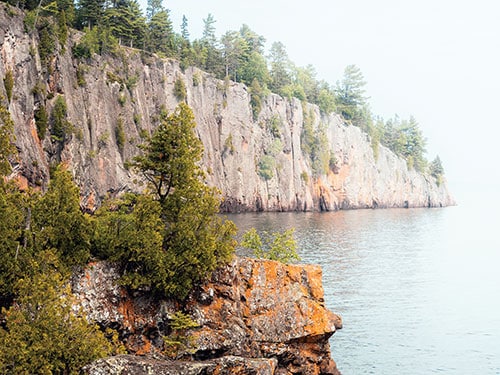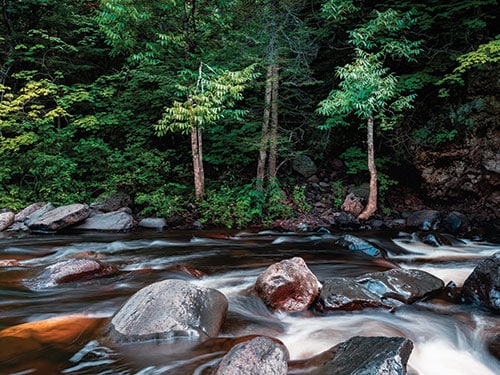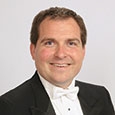 Aaron Perrine creates music inspired by the soundscapes and allure of the natural world. He has won the American Bandmasters Association Sousa/Ostwald Award for Only Light in 2015 and Pale Blue on Deep in 2013. Another of his compositions, Temperance, won the 2017 CBDNA Young Band Composition Contest. His music for winds has been featured at ABA Conventions, CBDNA National and Regional Conferences, TMEA, and the Midwest Clinic.
Aaron Perrine creates music inspired by the soundscapes and allure of the natural world. He has won the American Bandmasters Association Sousa/Ostwald Award for Only Light in 2015 and Pale Blue on Deep in 2013. Another of his compositions, Temperance, won the 2017 CBDNA Young Band Composition Contest. His music for winds has been featured at ABA Conventions, CBDNA National and Regional Conferences, TMEA, and the Midwest Clinic.
Perrine has conducted a variety of all-state and honor bands, most recently the 2023 South Carolina All-State Junior Band. He also taught for several years at Cornell College. He earned a doctorate from the University of Iowa, a master’s degree from the University of Minnesota, and a bachelor’s degree from the University of Minnesota, Morris.
What inspired you to begin composing?
I started composing in high school but didn’t become serious about it until college. My greatest inspiration was Jim Carlson, my jazz band director and trumpet teacher at the University of Minnesota, Morris. One day during my sophomore year I came to a lesson and he had a trombone waiting for me. I didn’t know what it was doing over there, but he knew trombone would be a better fit for me than trumpet. So, I switched and as I underwent an embouchure change, I needed a distraction. He suggested writing for one of the university jazz bands so I wrote a piece for them to perform. I ended up writing all sorts of works for choir and chamber ensembles for subsequent concerts, and in my senior year wrote my first piece for band called In This Moment.
After graduating, I taught high school band for five years and took invitations from friends to write for their groups. Throughout that time, my passion for composing grew. I eventually went to graduate school to earn a Ph.D. in music composition, taught at the college level for seven years, and eventually left to compose full time.
What is your creative process for composing?
I live in northern Minnesota and am inspired living here. My compositions begin with nature, and my music is connected to this place. My studio has big windows that allow me to look out into the woods while I work. I often go on walks and am passionate about photography. Photography and composing music have many similarities. Both employ similar concepts such as color, texture, and contrast. It often comes down to both the visual inspiration of nature and poetry. I enjoy many poets, but my favorite is Ted Kooser. He was born in Iowa, and I feel connected to Iowa because I spent nearly ten years living and working there. His poetry feels like home and has inspired me the most. Every time I sit down with one of his poetry books, it provides so much imagery.
Once I know the direction I want to go with a piece, I begin sketching the form without notes yet. These early sketches include basic texture ideas to have something on the page so I’m not just jumping in cold. The last step is searching for notes and rhythms by sitting down at the piano with pencil and paper. I alternate between the piano and the full score on my computer, thinking about orchestration and the various colors and textures I can embed into the lines. I don’t play my trombone anymore, but I do play piano, and there is something about feeling it under my fingers that I enjoy. I gradually carve out the work until it’s finally ready.
Which compositions offer the best introduction to your work?
People tend to find Only Light and Pale Blue on Deep. Only Light was commissioned by the University of Iowa Symphony Band. It was recently performed at the CBDNA National Conference by the Florida A&M Symphonic Band Wind Ensemble and at the ABA Conference by the University of Iowa Symphony Band. I just finished arranging it for full orchestra and string orchestra, and am currently working on edits of the recordings. Pale Blue on Deep has been programmed by many high school bands and is on some state repertoire lists. April is another one that is played a lot. It is an expressive lyrical piece that young bands can handle.

When you write, what type of ensemble is your favorite?
Bands are great because there are so many good people in this community. I love that directors are willing to give you significant amounts of time when working with their groups. At my last residency, I spent six hours with a band before the performance. I was even able to tweak the parts on my computer before the premiere. To have that much time with an ensemble is less common in other genres.
Also, band repertoire doesn’t go back as far as some other genres, so there is a greater need for new music, which is good for living composers. Band conductors are always open to trying new and different things, and that’s something I try to do when I’m writing. I greatly enjoy the endless color palette, especially with the percussion. It’s common to have 6-8 percussion parts in band works, and I love all the color that adds.
What advice do you have for conductors performing your music?
It’s important to know the score really well. Sometimes I show up at a rehearsal, and a conductor is doing something different than I imagined, and it works better. When that happens, it’s because the conductor did their homework on the piece and understands its inner workings. I am particular about tempos, colors, and timbres and how they shade each other. Also, my music almost always has a melodic line, and sometimes it’s just a bit harder to find because it’s split between various instruments. Studying the score allows the conductor to find those relationships and figure out what makes the piece work.
How do you think the band tradition will develop in the future?
Bands can go in many different directions, and that’s encouraging. There seems to be more chamber music these days with a wide range of instrumentation. There is more diversity with composers and the music performed. The band profession leads the charge on all of these fronts, which makes me proud to be associated with it. With all that said, I appreciate the tradition that’s been established for bands. We have our war horses in the repertoire, and there seems to be a nice balance between new and old.
What changes do you see coming for music education?
Music education has to evolve or it may go away. We need to continue to get good people into the profession who are passionate about teaching, and we need to support them. Where I live, there aren’t many people applying for open positions, and some jobs have been cut. This environment is different from when I came out of school. Not long ago, it was highly competitive to get a teaching job. I do worry about music education, and I think we need to make some changes. I have kids in school right now participating in band. My daughter plays the trumpet and sings, and my son plays the euphonium. Looking at their teacher’s schedules, it’s not great. We need to find more resources for these teachers.
As a composer, there are small things I can do. I have written hardly anything suitable for middle school bands, and I want to help by writing more music at that level. I’m in a consortium with Joni Greene and Ivette Herryman Rodriguez, and we are each composing a work for young bands. It is an exciting project because none of us have written much grade 1 and 2 music, and more needs to be written to diversify the repertoire. I also try to help by being available for Zoom and Skype sessions for schools. As a composer, I want to be visible to students and greatly enjoy guest conducting.

Why is writing easy music so difficult?
I recently wrote a grade 1 piece for string orchestra called Anna’s Star. The work is quarter notes, half notes, and whole notes, but not that many whole notes because of bow control. I try to write music that is melodic with great textures and nice harmonies, but there is a limited toolbox when writing for younger groups. Instead of focusing on the things they can’t do, you have to focus on what they can do and make it interesting. Finding something that inspires and motivates them to continue in music is what I want. They will never get to the more advanced repertoire without good early music that makes them think, inspires their imagination, and captures their attention.
I just finished a grade 2 band piece called Earthshine that was recently premiered by a South Carolina Honor Band. It teaches 68 time with very little hemiola, and it arrives at some nice harmonic moments. The voice leading is smooth, and the range is comfortable. Thinking about how to voice lead is a great challenge, but I also think about how to make the music sound like me. I want the same compositional voice just technically easier. Writing these pieces is a fun challenge.
What are your thoughts on composing with electronics?
I never expected to compose for electronics. In graduate school, I took electronic music at the University of Minnesota, and when I arrived at the University of Iowa for my doctorate I didn’t think I would take it again. At the encouragement of my teacher, I completed another year of electronic music. I enjoyed the class, and it changed the way I write. I love writing without bar lines and combining sounds to create new textures. There are many combinations of sounds between the acoustic instruments and electronics. Often, I use the acoustic instruments on just the attack, but the sustain and release can be different and combined in different ways.
The first piece that I wrote for winds and electronics is called the Long Light After Time. I originally wrote it to be premiered in the spring 2020. I worked frantically on it, and then COVID shut everything shut down. The premiere finally occurred in 2022 by the Michigan State University Concert Band, conducted by Arris Golden. That piece has fixed electronics with 50 or so cues but can be run without a click track. It doesn’t have to be exactly precise because the color is more impotant than the rhythm with those cues. The piece works as a stand-alone piece, but the electronics add a lot.
My second work to incorporate electronics is Bluebonnet Drift, which was premiered by the Wakeland High School Wind Symphony at the 2021 Midwest Clinic. I used a click track for half of it, and I had this idea of bluebonnets having a reedy sound and started thinking about a tenor sax early on. I collaborated with a friend, Joel Vanderheyden, who is a great tenor sax player. The piece is very free time, and the electronic cues can come and go as the director wants; the other half of the work is right in time. Going back to writing for young bands, as long as the technology is easy to implement, this is something that can get kids excited about music and also helps to fill out their sound. I want to keep dabbling with electronics.
What is your best advice for young composers?
The most important thing is to hear your music performed live so you can see what people can do with it. If possible, attend reading sessions from the beginning. With my first piece for jazz band, there was some notation that could have been written better. Getting involved early on allowed to me to make changes and saved rehearsal time, and was invaluable to my growth as a composer. During the performance, do your best to get a good recording. Afterward, evaluate the experience and then move on. Be patient and prepared for opportunities that might come your way if you’re in the right spot at the right time.
When you are at school spend as much time as possible looking through scores and listening. One teacher told me that when listening I should think, “wow and then how.” That means that after hearing something that was surprising and caught my attention, to then figure out how the composer accomplished that. This allows you to discover how others achieved certain colors and combine sounds. You can then go back and forth from listening to the score, and continue to learn. It’s also important to network with the people you go to school with because they can become important connections that will help you later on. A few other things that are important include developing strong skills with the notation program to make the score clean for engraving, joining BMI or ASCAP so you can collect royalties, and being prepared and comfortable spending time in isolation composing.
Finally, it is important to understand the business side of publishing, especially if you self-publish. That is something you don’t normally learn in school. If you can, find a mentor to help guide you through the various business situations that inevitably arise.
For more information, visit www.aaronperrine.com
Nature photos by Aaron Perrine






